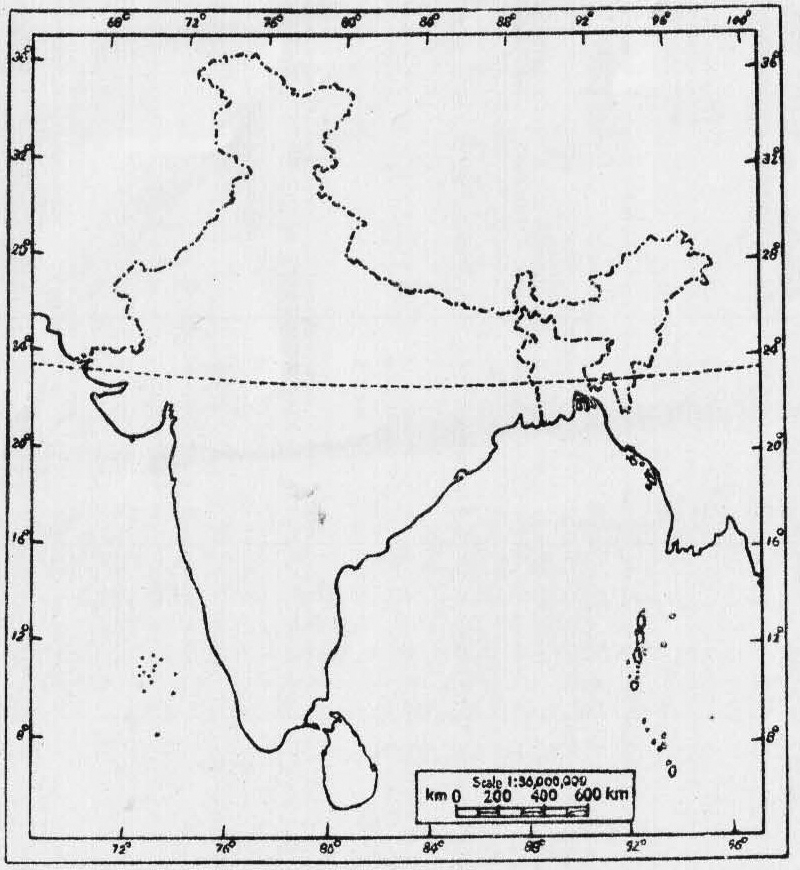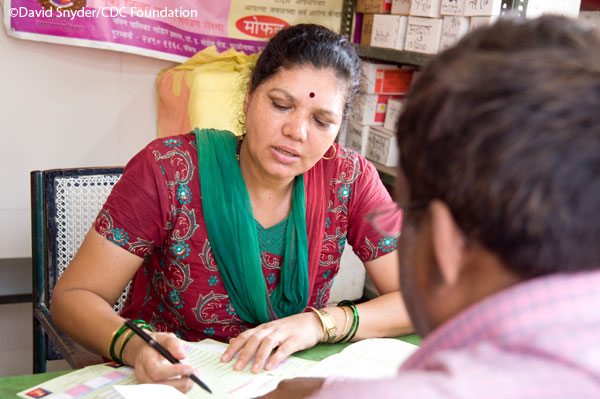
CDC in India
The Centers for Disease Control and Prevention (CDC) established an office in India in 2001 to support the Life Initiative for HIV/AIDS prevention and control. Today, CDC maintains a presence in New Delhi, Mumbai and Hyderabad with staff supporting initiatives of the Division of Global HIV and Tuberculosis, the Division of Global Health Protection, the Division of Healthcare Quality Promotion, the Influenza Division, and the Global Immunization Division. CDC collaborates with the government of India (GOI), Indian institutions, and international organizations to address a wide range of infectious and noncommunicable diseases. Together, we work to strengthen India’s health system to reach national and international goals.
Download Overview Fact Sheet [PDF 2,384 KB] (For Print Only)

CDC Staff
9 U.S. Assignees
2 Seconded to WHO
26 Locally Employed

At a Glance
Population: 1,355,877,548
Per capita income: $6,490
Life expectancy at birth: W 70/M 67 yrs
Infant mortality rate: 37/1000 live births

Top 10 Causes of Death
- Cardiovascular Diseases
- Diarrheal Diseases
- Neonatal Disorders
- Non-communicable Diseases
- Chronic Respiratory
- Diabetes
- Mental Disorders
- Unintentional Injuries
- Neoplasms
- Nutritional Deficiencies
Source: World Bank India
Source: Population Reference Bureau (2017) India
HIV and TB
HIV and AIDS are a major public health issue and CDC’s HIV program began in 2001 with the goal of strengthening HIV prevention and control in India. With tuberculosis (TB) as a common cause of death among people living with HIV, CDC’s program has moved from one focused mainly on HIV prevention and treatment to one that addresses TB diagnosis and treatment as well. CDC works closely with India’s Ministry of Health and Family Welfare’s National AIDS Control Organization (NACO) to deliver high quality and high impact HIV interventions to reduce the incidence of new HIV infections, reduce morbidity and mortality related to HIV and AIDS, and strengthen data systems. CDC India is committed to achieving the UNAIDS goal of 90-90-90 by 2020 (90% of all people living with HIV will know their HIV status, 90% of all people with diagnosed HIV infection will receive sustained treatment, and 90% of all people receiving treatment will have viral load suppression).
In support of NACO, CDC India, with PEPFAR support, has focused its efforts on preventing new infections among key populations, increasing access to treatment and diagnostic laboratory services for people living with HIV and TB, and establishing a single monitoring and evaluation system.
Global Health Security Agenda (GHSA)
GHSA has been implemented in India since 2014. CDC India collaborates with more than 17 Indian government and non-government institutions to build capacity to rapidly detect, accurately identify, and promptly contain emerging infectious disease threats. GHSA activities include strengthening surveillance networks and public health laboratory systems, including a focus on antimicrobial resistance, providing technical assistance to improve outbreak and emergency response and build the public health workforce, and bridging the human-animal interface to detect emerging zoonotic disease threats.
India Epidemic Intelligence Service
In 2012, CDC, in collaboration with India’s National Centre for Disease Control, established the India Epidemic Intelligence Service Programme (EIS) – a post-graduate field training program modeled after the US CDC EIS Program. EIS has now expanded to two additional hubs at WHO India Country Office and at the ICMR National Institute of Epidemiology. CDC supports the India EIS Programme by providing technical assistance and a resident advisor. To date, 33 officers have graduated, and 45 are currently in the program, evaluating surveillance systems, investigating outbreaks and conducting epi studies. The majority of graduates have returned to positions in district, state and national level programs where they lead surveillance and outbreak response efforts. CDC also supports the three-month Frontline Epidemiology training, a district-level training designed for district epidemiologists and deputy chief medical/health officers who are the focal points for disease surveillance; 200 health officials from 133 districts in five states have been trained.
Influenza
CDC has supported capacity-building for surveillance since 2004, leading to improved characterization of circulating influenza viruses and rapid detection of novel viruses. CDC-supported laboratory training and preparedness workshops have strengthened India’s response measures against seasonal, avian, and pandemic influenza. The improved capacity has led to a better understanding of influenza epidemiology in India. CDC also collaborates with leading Indian academic and research institutes to establish community based platforms to determine influenza burden in India, evaluate the effectiveness of influenza vaccines, and identify optimal timing for influenza vaccination, all of which help inform national influenza vaccination policy. CDC has collaborated with partner organizations to understand the epidemiology of respiratory syncytial virus and other respiratory pathogens that cause pneumonia primarily in children and older adults. In addition, a CDC assignee supports influenza activities at the WHO Southeast Asia Regional Office (SEARO).
Vaccine-Preventable Diseases

CDC has supported efforts to achieve the control, elimination, and eradication of vaccine-preventable diseases in India through the Universal Immunization Programme (UIP) for decades. Since the mid 1990’s, this support has helped strengthen capacity for epidemiology and laboratory methods, routine immunization services, training methods, data systems and use, case-based disease surveillance and outbreak preparedness and response. CDC support to the National Polio Surveillance Project (NPSP) has strengthened implementation of polio and measles vaccination campaigns, outbreak response activities and surveillance. CDC laboratories support capacity development at India’s national surveillance laboratories. Since 2003, support for immunization systems has focused on strengthening routine immunization services and workforce development. Since the enormous public health success of the Government of India (GOI) to bring an end to endemic poliovirus, with the last case in 2011, CDC support has increasingly focused on other GOI priorities, including measles elimination and control of rubella and other vaccine-preventable diseases. Current efforts also support maintaining polio-free status, improving surveillance, strengthening the routine immunization system, addressing vaccine demand needs and strengthening workforce development. CDC staff assignees to the NPSP along with collaborations with other immunization partners, e.g. UNICEF, USAID, BMGF, GAVI, and WHO support these efforts and work closely with the India UIP.
Noncommunicable Diseases

CDC India provides expertise and consultation on critical non-communicable disease issues in India, including hypertension, chemical and radiological contaminants, preparedness for environmental emergencies, burn surveillance, and health impacts of household air pollution. CDC also provides expertise and support to help India consistently implement the four surveys of the Global Tobacco Surveillance System, managed by CDC and WHO. CDC India supports training of GOI NCD public health professionals in epidemiology and field investigation skills.
Impact in India

Impact on India
- Identified monsoon seasonality of influenza virus, leading to revision of recommendation to vaccinate during pre-monsoon period (April-May).
- Comprehensive investigation involving EIS officers and CDC collaboration with GOI and state and district stakeholders led to the discovery that a naturally occurring toxin found in lychee fruit was the cause of a previously unexplained neurologic illness affecting children in Bihar.
- Real-time sentinel disease surveillance has led to the finding that only seven pathogens account for the overwhelming majority (>80%) of illness with a diagnosed etiology: dengue virus, influenza virus, Japanese encephalitis virus, Kyasanur Forest disease virus, leptospira, malaria, and scrub typhus.
Resources and Links
General
Travel
HIV/AIDS
Immunization
Yellow Fever and Malaria Information
Polio
- Updates on CDC’s Polio Eradication Efforts
- Video: Global Immunization: Polio in India
- Public Health Grand Rounds Presentation: Polio Eradication in India
TB
Health Systems Strengthening
Annual Report
Download the CDC India Annual Report [PDF – 15 MB]
Videos
CDC works 24/7 to protect the American people from disease, including those that begin overseas. CDC has dedicated and caring experts in over 50 countries. They detect and control outbreaks at their source, saving lives and reducing healthcare costs. In India, CDC is helping to develop a strong public health system.
- Page last reviewed: October 2, 2018
- Page last updated: October 2, 2018
- Content source:
Global Health
Notice: Linking to a non-federal site does not constitute an endorsement by HHS, CDC or any of its employees of the sponsors or the information and products presented on the site.



 ShareCompartir
ShareCompartir

